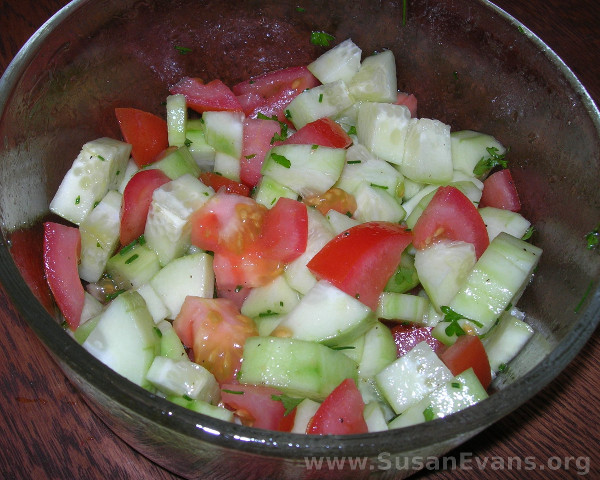Recently I decided to make some Bible-time foods, having found the book Foods from the Bible at a used curriculum sale for fifty cents. My son begged me to get it, so I let him make these recipes. The first recipe was for Jacob’s lentil stew that he might have made for Esau in exchange for the birthright. After reading the story to the children, we mixed the following ingredients together:
- 2/3 cup red lentils
- 1 medium yellow onion, diced
- 1 tablespoon flour
- ¼ cup rice
- 2 tablespoons olive oil
- 2 teaspoons salt
- ¼ teaspoon black pepper
- ¼ cup diced bell pepper
- 5 cups water
Add these together in a big pot, bring to a boil, then simmer for 1 hour. Pour it into a blender, making sure the lid is on tight, or everyone will scream at being scalded by the burning stew, which looks like barf by that time. I told the children to look away so that they wouldn’t lose their appetite. But it was too late.
Oh, I forgot to mention to add these ingredients to the blender at the last minute:
- 2 tablespoons lemon juice
- 2 tablespoons fresh parsley, chopped
- pinch of red pepper
You need more than a pinch of red pepper for this tasteless stew to have any flavor whatsoever. It tastes kind of like pea soup. Plus, it’s not red, even though the lentils were red. So the real stew must have contained tomatoes. Or something red. Maybe something with flavor. No way did Esau trade his birthright for this dish.
As a side dish, we made a Bible-time cucumber salad:
- 1 cucumber, peeled and diced
- 1 large tomato
- 1 small onion, chopped
- 1 tablespoon fresh parsley, minced
- 1 tablespoon olive oil
- 1 tablespoon vinegar
- 1 teaspoon minced garlic
- salt and pepper to taste
Combine ingredients and chill before serving. This salad has a more delicate flavor than your average cucumber salad, which I like better than this. But this salad was okay. The children ate it without complaint.
And lastly, we made some Bible-time mint tea:
- 5 cups boiling water
- 1 tablespoon fresh mint leaves
- 8 teaspoons of sugar, or honey to taste
- 4 tea bags
Steep all the ingredients together for about three minutes. Pour into cups, and garnish with a sprig of mint. Two of my children loved this tea, which is a great way to finish a somewhat lousy meal.
Tags: Bible class, Bible-time food, food, Genesis, Homeschooling






Haha! My children LOVE lentils! But they weren’t able to eat gluten for many years, flavor like everything else is in the eye or mouth in this case of the beholder!
Amy, it actually tasted a lot better reheated the next day. LOL
“No way did Esau trade his birthright for this dish.” Hahahaha!
Some people don’t mind bland food, but I am definitely not a fan. Since I would probably agree with your assessments, I won’t be picking up this book if I see it somewhere. 😉
I wonder why the author of this book didn’t make sure the stew was red before publishing the book. I mean, the Bible said it was red…
That looks really good, what a great idea!
It’s fun to eat Bible-time foods anyway, to imagine what it would have been like to eat back then.
I recently became interested in eating more beans and lentils because they contain “resistant starch.” Supposedly, that fills us up without making us fat.
I don’t think the Bible was making a point about how delicious that soup was, but rather about how much Esau despised his birthright. Sorry, but the “theologian” side of me can’t help but mention that.
Still, I appreciate your honesty about the flavor, and will add some extra spices.
I might substitute more red lentils for the rice, but I don’t know if that will make it red.
The red lentils really aren’t red after they’re cooked. They look more red when they are raw. Maybe back in Bible times, the lentils had a darker red color.
Regarding the red color, this is from thehistorykitchen.com:
“While the stew that Jacob cooks is clearly described as “red,” no spices that I know of from this time period would tint the stew red. Sumac has a reddish tint, but it should only be used sparingly because it has a pretty strong flavor. I have used red lentils for the recipe, but they cook up a light brown color. I suppose you could add some paprika to achieve a more reddish color, but paprika was not a known spice to the ancient Israelites.”
How interesting that there were no red spices in that area back then. Maybe it was some other ingredient…
As a self-described food historian, I too have been curious about what made Esau’s stew “red”. It most definitely could not have been tomatoes or red peppers of any kind as none of these foods were known in that area prior to 1492. (By the way, this also includes your green pepper, which is simply an immature red pepper). Nor would it have been any beans other than fava beans, as limas, kidneys and the like are also from the New World. And red lentils, as others have mentioned, do not keep their color when cooked. Sumac is a possibility since it does turn things a rusty color. Could it be that the word red has been mistranslated?
I’m sure that a color isn’t mistranslated. It’s probably a flavoring like Sumac that turned it red.
I HATED lentils as a kid, and always wondered how Esau would have given up his birthright for that! That being said, I might have to make a pot of lentil soup soon!
Haha! Yes, lentils aren’t that tasty really…
What a fun idea!! And great for homeschoolers to include in their bible lesson. Love it.
Thanks. It’s fun to internalize Bible stories like this.
Looks like an interesting meal! How did all the flavors go together?